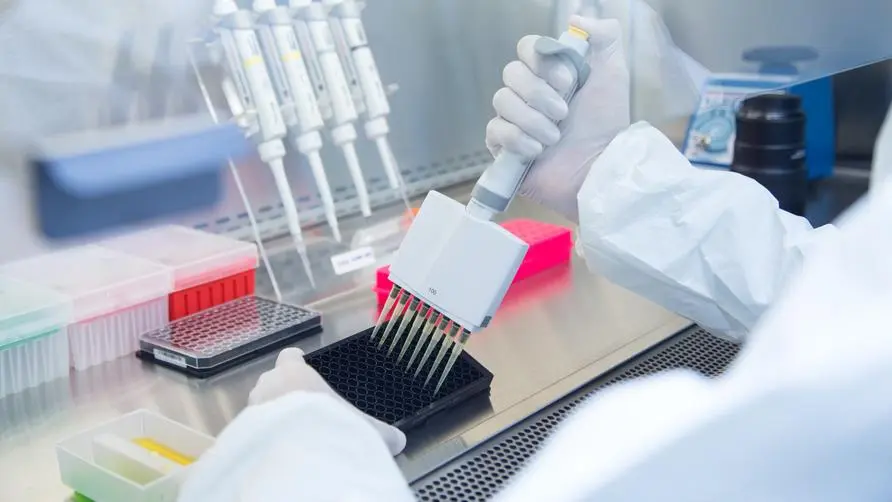Can stem cell transplant cure HIV infection? Experts reveal "two major contributors" to the decline in HIV numbers year by year

Stem cell transplant “cures” HIV? Is the treatment process a narrow escape?
HIV (Human Immunodeficiency Virus, AIDS) is no longer an incurable disease. The third case report of “curing” HIV after receiving stem cell transplantation was published in the international journal “Nature Medicine” in February this year and attracted widespread attention. However, , are all HIV-infected people suitable for stem cell transplantation to eliminate the viral threat from the body once and for all?
Taiwan Ministry of Health and Welfare Dr. Zheng Shuxing, deputy director of Taoyuan Hospital, said in an interview that HIV cases will be treated with stem cell transplantation, mostly because they face unavoidable situations. For example, the HIV-infected person who published a report in February this year was because the case suffered from blood cancer. , it is necessary to undergo high-intensity chemotherapy and then receive a stem cell transplant to save the patient’s life. Although the effect of “curing” HIV infection is achieved, the risk of the process is almost a “narrow escape”.
Dr. Zheng Shuxing explained that HIV-infected patients must undergo detailed matching before stem cell transplantation to find stem cells with “CCR5 Delta32/Delta32” gene defects, and then destroy immune cells throughout the body through chemotherapy and radiotherapy. Poor stem cell production and immunity may also occur after surgery. Exclusion issues. Stem cell transplantation is usually considered only when HIV-infected patients face blood diseases such as leukemia and lymphoma, and some patients may face the risk of lifelong rejection.
From 20 pills to 1 pill a day! Great strides in HIV treatment
HIV treatment methods have made great progress in recent years. Dr. Zheng Shuxing explained that the current standard treatment for HIV infection is to take antiviral drugs. In the past, cocktail therapy required taking drugs 3-4 times a day, ranging from 2-6 pills each time. It has progressed to today. As long as “one pill a day, once a day”, effective treatment control can be achieved. In recent years, long-acting injectable antiviral drugs have also become available, and infected patients only need to go to the hospital for injections once every two months. Treatment convenience and compliance have been greatly improved.
Dr. Zheng Shuxing said that HIV antiviral drugs need to be taken for a long time, and there is currently no recommendation to discontinue the drug. In addition, as the patient ages, he may have other chronic diseases such as high blood pressure, heart disease, and diabetes. Medication adjustments should be made in consultation with the doctor. Communicate fully.
Overall, HIV treatment is becoming more and more user-friendly and convenient, and is controlled like a normal chronic disease. As long as it is treated properly, the vast majority of infected people can achieve the goal of “U=U” (undetectable virus = no infectivity) and maintain Maintain a normal quality of life and ensure the safety of relatives, friends and the overall community.
The number of new infections has dropped by 50% in 5 years! Two major contributors to HIV prevention and control in Taiwan
Taiwan has made outstanding achievements in promoting HIV prevention and treatment. In 2017, there were about 2,500 new cases of HIV each year. By the end of 2022, the number of new cases of HIV had dropped to 1,074, and the proportion of new cases of HIV had dropped by more than 50% in five years. Dr. Cheng Shu-hsing said that in the second phase of the “95-95-95” goals of the United Nations Program on AIDS (UNAIDS) to “End AIDS”, Taiwan achieved 95% in the latter two (95% of infected people are taking medication, and 95% of infected people are taking medication) The number of new cases of COVID-19 cases that have not reached 95% has reached the standard, and the number of new cases each year continues to decline at a rate of 15%-20%.
Dr. Zheng Shuxing pointed out that there are two major contributors to the decline in the number of new HIV cases year by year. One is the popularization of the concept of preventive medication (PEP), and the other is the effective implementation of the treatment goal “U=U”. More than 95% of patients who receive treatment can achieve Undetectable virus = non-infectious control, interrupting the HIV transmission chain, thereby reducing the number of new infections.
In addition, post-exposure prophylaxis (PEP) can also be used to reduce the risk of infection after risky behaviors occur. Dr. Zheng Shuxing explained that medication should be taken as soon as possible within 72 hours after risky behaviors and taken continuously for 28 days. Data shows that it has a good protective effect. From the perspective of HIV prevention, as long as you belong to a high-risk group (such as a large number of partners, irregular partners, intravenous injection, gay men, etc.), it is recommended to seek an infectious disease physician to evaluate whether PREP medication is suitable for pre-prevention, so that you can better understand it. Health autonomy.
U=U can safely remove teeth and perform surgery! HIV prevention and treatment concepts continue to advance
Dr. Zheng Shuxing said that HIV has gradually evolved from the “Black Death of the Century” in the public mind in the past to a chronic disease that can be stably controlled by taking medication once a day. Research shows that the average life expectancy of HIV-infected people who receive proper treatment is very similar to that of uninfected people. Taiwan Ministry of Health and Welfare Taoyuan Hospital HIV Care Center will celebrate 20 years since its establishment in 2022. It has been caring for three generations of infected people, including the elderly, middle-aged and young people. By establishing a good relationship of mutual trust with the cases, it helps the infected people return to normal lives and continue to contribute to society. .
Dr. Zheng Shuxing reminded that the concept of HIV prevention and treatment is becoming more and more advanced. Through the Internet, schools and anonymous screening stations, at-risk groups can be helped to contact appropriate medical resources, and the number of publicly funded preventive drugs continues to increase. As long as the infected person reaches “U=U”, he or she is not contagious, and there is no risk of infection when surgery or tooth extraction is needed. They can proactively provide treatment information and establish a mutual trust relationship with medical staff. If you have any side effects after taking the medication, you can discuss medication adjustments with your doctor to find the most suitable treatment method for you.
Further reading:





